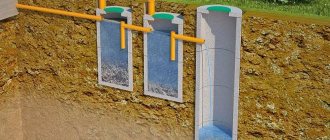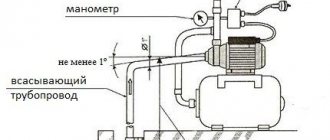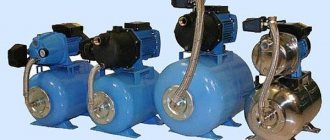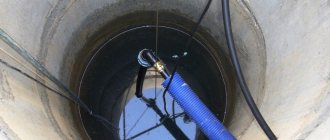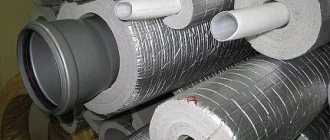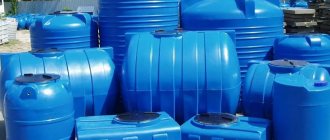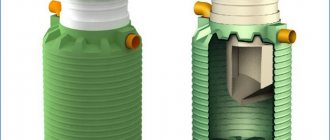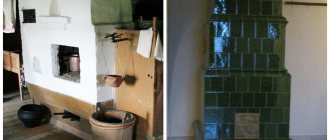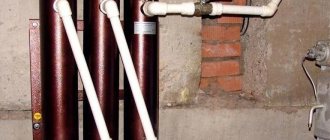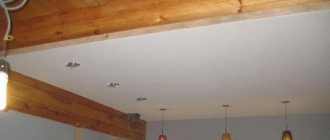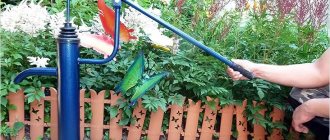The design of a classic household sewer system allows wastewater to enter the receiving collector only by gravity. The landscape of some areas is not suitable for solving such a problem. Therefore, in this case, the developer will need a sololift for the sewerage. Let's look at what it is and how to properly organize its installation.
Fecal pump for toilet Source afonya-spb.ru
Why do you need a sololift?
Sololift is a general name for household sanitary pumps for forced sewerage. Their use is justified when the drainage pipeline has insufficient slope. In this case, the water used for domestic needs cannot flow into the receiving collector on its own.
Sometimes the sewer system itself can be quite long. This happens when a laundry room or kitchen is installed in a separate room, which is located at a great distance from the central sewer line. With such a layout, it is also impossible to create the necessary slope for good gravity flow.
Often the basements of private houses are also used for domestic needs. For example, a gym is set up in a spacious basement room. In this case, it is necessary to combine it with a shower so that immediately after classes you can wash off the sweat released from your body.
Sololift for shower Source prom.st
In buildings where large numbers of people live, a conventional sewer system may not be able to cope with the increased volume of wastewater. Especially if the pipeline has a smaller diameter than the standard norm. In this situation, it is simply necessary to connect the pumping equipment to the system. And it is desirable that it has a chopper.
What is a sololift and why is it needed?
Based on their content, wastewater is divided into gray and black household waste. The first comes from the shower, washbasin, kitchen sink and contains liquids contaminated with grease and detergents. The latter flows from the toilet and can include personal hygiene items, feces and various by-products.
In a standard sewer system, wastewater flows by gravity into the sanitary main and is discharged to the place of treatment or disposal. For normal operation of the system, it is necessary that all sources are located above the inlet pipe of the outlet manifold. Otherwise, connecting household appliances without the use of additional equipment will be impossible.
This problem can be solved by installing a sanitary pump with a grinder - a sololift - into the system (see video). The forced sewerage method allows hydraulic equipment to be placed in any part of the building.
Applicable:
- for the installation of additional bathrooms in the basement or basement;
- to organize the protection of internal sewerage from the backflow of liquid from the main collector;
- to improve showers and toilets in hotels and office buildings.
How does a sanitary pump work?
Let's take a closer look at what a sololift for sewerage is based on its structure and operating principle. Any of the produced models has a fairly simple circuit. And the difference between them usually lies in the power of the working units or additional equipment.
The sanitary pumping station consists of:
- storage tank (aka housing);
- submersible pump;
- check valve;
- receiving filter system;
- chopper;
- electronic relay;
- carbon filter.
The principle of operation of a sololift for sewage is extremely simple. The unit is in standby mode most of the time. And as soon as the wastewater enters the receiving filter system, the mechanism for grinding feces and debris that has entered the pipeline is automatically turned on.
Sewage pump with grinder Source hakimteknik.com
The storage capacity will be filled to a certain level, which is monitored by a special sensor. As soon as the liquid reaches the planned level, the relay will transmit a signal to turn on the pumping equipment. The pump begins pumping out fecal waste, directing it through a pipeline to the central collector.
The power of the pumps varies between models. But on average, it allows you to lift liquid to a height of seven meters and send it over a distance of up to 100 meters. When the wastewater level in the storage tank reaches the lowest point, another sensor sends a signal to turn off the pump.
Installing a check valve at the outlet of the container prevents the return of liquid from the pipeline into it. All connections on the device body are completely sealed. And the carbon filter prevents unpleasant odors from entering the room.
Installation and connection
To connect a sololift, it is best to use polymer or metal-plastic profiles with a diameter of 23-32 mm.
Installation instructions:
- It is prohibited to install the station below floor level, in a pit.
- Supply pipelines must be placed relative to a horizontal surface with a slope of 1-3%.
- The vertical section of the outlet line should begin immediately behind the device body (recommended length - 6 m).
- For “WC” models, the distance between the unit and the floor-standing toilet should be minimal (130-150 mm).
- The length of the pressure pipeline is subject to the height of the liquid rise, taking into account local friction losses.
- The unit is secured to the floor using steel bolts included in the delivery kit.
- When installing, you should take into account the recommended distances between the housing and equipment installed nearby - for ease of repair and maintenance of the device.
- If several pumps are installed, the connection should be made in groups separated from each other by the type of equipment being serviced (shower, toilet, dishwasher, etc.).
- The insertion into the central manifold should be made at an angle that does not impede the passage of the main fluid flow.
- Combining discharge pipelines from different pumping installations is not permitted.
Sololift installation diagram.
The connection of the station to the electrical network must be carried out by professional installers in compliance with safety regulations. The pumping unit must be equipped with a grounding device and a residual current circuit breaker (RCD).
Advantages of a sanitary station
The installation has rightfully gained popularity among consumers. And today it is the most modern solution for forced drainage of sewage. And also for feeding them to great heights.
Installation diagram of a sololift for sewerage in the basement Source rvk-com.ru
Advantages of sololift:
- Durable sealed housing.
- Small dimensions.
- Easy installation.
- Quiet pump operation.
- Automatic operation mode.
- Possibility of using small diameter pipelines.
- Good resistance to high temperatures and pressure.
- No unpleasant odors.
- Easy maintenance.
- High profitability.
In addition, many models are equipped with additional components that significantly increase their performance and ease of use. In addition, installing a sololift is not difficult. Installation does not require special tools or specialized knowledge.
In technical terms, the device has no disadvantages. The only thing that needs to be mentioned is the need for a constant connection to the power grid. After all, if there is no power, the wastewater will not be able to leave the storage tank on its own. It should also be remembered that the device is not intended for pumping aggressive chemical liquids.
Sololift in the basement of the house Source profibud-zahid.com.ua
See also: Catalog of companies that specialize in engineering systems (heating, water supply, sewerage and others) and related work
Pros and cons of the design
The equipment has the following advantages:
- efficient operation even when connected to a small diameter pipeline;
- small dimensions, the ability to install the device in confined spaces;
- convenient operation;
- a number of improved models have a vortex design, due to which blockages do not form in the system;
- no need to use expensive tools for installation;
- compatibility with various types of interior.
One of the disadvantages is the overpriced device. Another problem is complex repairs that are difficult to do on your own. Most owners turn to professional repairmen to fix breakdowns, which requires additional costs. On the other hand, with proper operation and initially correct installation, the system rarely needs maintenance.
The right choice for your home
Before purchasing a device, you need to decide in several areas. There is no point in buying an overly expensive and powerful unit for a family of three. There is also no need for it if there is no need to direct fecal waste over long distances and considerable heights.
If there are few residents in the house, and the basements are not used for plumbing needs, then it is quite possible to get by with the simplest model with a minimum of components. And if you want to save money, you can even find a device without an automation unit. And just manually turn on the device immediately after each visit to the toilet. And after cleaning the drive, turn it off.
In general, the following parameters need to be taken into account:
- The number of places in the house that have a drain.
- Distance to the central collector.
- The maximum height to which the drains need to be raised.
- Number of occupants in the building, including large pets.
Forced sewerage equipment in the basement Source santehnic-doma.ru
According to this, the required power of the device is selected. That being said, it's a good idea to pay attention to performance. If most of the household uses the toilet, shower and kitchen sink at the same time, and the washing machine is also running at this moment, then you will need not only a good throughput of the entire sewer system, but also a high pump pumping speed. For such critical cases, it is better to choose a model capable of pumping at least 200 liters of liquid per minute.
After this, you need to pay attention to the place where the sololift will be installed. The latter itself is not bulky in size. But if the room is extremely small, then it is best to select the most compact model. There are enough devices on sale that can be placed directly behind the toilet. There they do not occupy any useful space and do not spoil the overall appearance of the interior.
As a rule, all models are designed to withstand liquid heated to +50 °C. But if in a house there is a regular need to pump wastewater at higher temperatures, then this parameter should also be taken into account. There are sololifts that can briefly (within 30 minutes) pass through even water heated to +90 °C.
Sololift for a washing machine Source stm66.ru
In order not to rack your brains too much with calculating the required performance, you can simply trust the manufacturer. Each model is marked with a marking that indicates for what purpose it is best suited. All the necessary data can be found in the table.
| Marking | Connection points | Storage capacity | Liquid temperature | Bandwidth | Power |
| + WC | Toilet | Up to 9 liters | 50 | 149 l/min | Up to 620 W |
| + WC-1 | Toilet and sink | 9 l | 50 | 149 l/min | 620 W |
| + WC-3 | Toilet, sink, bidet and shower | 9 l | 50 | 149 l/min | 620 W |
| + CWC-3 | Wall-hung toilet, sink and shower cabin | 9 l | 50 | 137 l/min | 620 W |
| + C-3 | Washing machine and dishwasher | 5.7 l | Up to 90 | 204 l/min | 640 W |
| + D-3 | Sink and shower | 2 l | 50 | 119 l/min | 280 W |
The last two types of stations are considered additional. They are not designed to connect to a toilet and are usually installed separately. And all models to which a toilet is connected are usually equipped with a grinder.
If desired, you can choose a unit with exclusive features. For example, capable of recycling sanitary pads. Or having devices for clearing blockages.
Technical characteristics and markings of the device
Today, a number of Sololift models are represented by a line of products of various modifications. All products are produced in white plastic cases with a certain differentiation according to purpose and configuration. Pumping units of this kind are intended for residential premises, offices, and industrial buildings.
Devices of this type are equipped with shredders, but can only process toilet paper; waste must be prevented from entering drains.
If this is not possible, you need to select other similar equipment. Some models are capable of processing more complex contaminants in the form of sanitary pads. This feature is reflected in the device passport.
Watch the video
Sololift Grundfos C3 repair and maintenance. How to disassemble and clean.
The Sololift product line includes the following types of pumping equipment:
- C-3, where the index “C” indicates the size of the product, equal to 125 millimeters;
- D-3, the marking indicates the applicability of the device only for sinks and shower stalls; using it with a toilet leads to sewer blockages;
- WC – designation indicating the presence of a cutting device for grinding inclusions in the kit, allowing it to be used with a toilet;
- WC-1 – the pump is equipped with one inlet;
- WC-3 – the device has 3 inputs.
Such systems can be installed with toilets, bidets, and washing machines.
Equipment of this class can operate with substances with temperatures up to + 45 degrees. If it is necessary to process streams with hot water, you need to use a device model C-3.
Devices of this class provide a power of up to 10 meters with a productivity of about 4.3 cubic meters per hour of operation.
The design features and complete set of devices of this class give them the following capabilities:
- there is an overheating protection function;
- the use of a carbon filter is provided to eliminate sewer odor;
- The cable length of 1.2 meters allows you to choose where to place the pump.
Units of this type operate on a 220 volt network. The use of hydrodynamic thermal relays is provided to prevent the container from overflowing. Non-return valves are installed on the pressure pipes, protecting the device from overflow and liquid leakage to the outside.
Metal parts can work in aggressive environments because they are made of anti-corrosion steel.
Brief overview of popular models
The leading products in the consumer market are the Danish company GRUNDFOS. This is a reliable manufacturer that produces high-performance and durable sewage pumping stations. But there are many products from other companies that are also in demand. And among them you can choose an inexpensive but high-quality model.
Sololift WC1
The weight of the device is 7.3 kg. The storage tank holds 9 liters of liquid. For installation, you will need a flat horizontal surface at a distance from the toilet outlet of 1 to 15 cm. Dowels and screws are used for fixation.
The shredder easily processes feces and toilet paper, as well as other non-solid waste, into a homogeneous mass. The pump motor can switch itself off if it overheats. After the critical temperature drops to normal, the device will automatically restart.
Sololift WC3
To such a sewer sololift, in addition to the toilet and sink, you can additionally connect a bidet and a shower. Moreover, all points can be used simultaneously. Although the storage tank has a capacity of only 9 liters, the powerful and high-speed pump manages to drive all the wastewater through the pipeline.
Sololift with components Source dvoroz.ru
The weight of the unit is also 7.3 kg. And its feature is the presence of a vortex hydraulic system. Working on a forced type, it is able to quickly deal with any blockages in the pipeline. The device is also protected against leaks.
Sololift CWC3
This sewer sololift with grinder is designed for wall mounting. Its weight is 7.1 kg. And although the storage tank has a small volume, a powerful pump quickly moves all the wastewater through the pipeline without difficulty.
A distinctive feature of this unit is the reinforced cutting mechanism. It easily processes feminine pads into a homogeneous mass. And in principle, it will cope with any debris, but no harder than stones. The device also has an audible alarm when overloaded.
Sololift C3
The device can easily withstand heating up to +75 degrees Celsius. Capable of pumping liquids with temperatures up to +90 °C for 30 minutes. Therefore, it is used for waste water from washing machines or dishwashers.
Connecting a sololift to a washing machine and dishwasher Source iwt.ua
The weight of such a unit is 6.6 kg. And the tank holds 5.7 liters of waste. Three sources of wastewater can be connected to it simultaneously. And to protect the device, an audible fault indicator and a magnetic float self-shutdown mechanism are built into it.
Sololift D3
The smallest device. It is intended only for pumping “clean” water, without fecal matter. Therefore it is not equipped with a chopper. Connects to the kitchen sink. Can be used in the shower room.
Its weight is only 4.3 kg. But it needs to be mounted only on the floor in a horizontal position. To retain small debris and hair, a mesh is installed on the intake filter, which must be regularly cleaned of blockages. The tank volume is only 2 liters. But since the pressure power of the device for “clean” water is quite sufficient, there are no delays in emptying.
How to choose a Sololift sewer pump for a toilet and sink - recommendations from our editors
Before buying a Sololift for sewerage, you should first study the technical parameters of the device, as well as decide on the intended use. If renovation work is to be done in the house with subsequent redevelopment and relocation of equipment, preference should be given to pumping stations with several inlets.
Types of devices compatible with Grundfos pumping stations
It is extremely important to take into account the maximum water temperature at which normal operation of the equipment is allowed. Also, when choosing a pumping station, you need to take into account the method of its installation, since the higher it is located, the greater the power consumption will be. If you choose the wrong installation (in terms of power and performance), there is a high probability that the pump will not withstand the load and will burn out. For this reason, you should select a system with a small margin of basic technical parameters. We offer you to watch a video that will allow you to quickly understand the criteria for choosing Sololift pumping systems.
Video “Criteria for selecting Sololift pumping stations”:
Installation in the sewer system
Connecting a sololift does not have any difficulties. Because each model comes with detailed and understandable instructions. For self-installation, you will need various screwdrivers, as well as a box and adjustable wrench. You also need to have multifunctional tongs.
The equipment is preliminarily checked, and missing parts are purchased. It is advisable to purchase a special mat for the device to dampen vibrations from the pump. Be sure to check the presence of a check valve. Otherwise, part of the dirty wastewater will be returned back into the system.
Check valve for sololift Source amazon.com
All operations boil down to the following:
- The toilet is being dismantled.
- The station is installed on the mat.
- The drain pipe from the sink is installed.
- One of the plugs is removed from the device body. A hole for the pipe is carefully cut out in it. Then it is installed in place.
- The adapter is secured to the prepared plug with a clamp.
- A drain pipe from the sink is installed in it.
- The operation of the check valve is checked.
- Next, a hole is cut in the plastic cover of the sololift for the pressure pipe.
- An elbow pipe is inserted into it, secured with a clamp, and the seal is tightened.
- 10.Then the pressure pipe is connected and the drain hole is closed.
- 11.The unit is attached to the floor.
- 12.The toilet is put in place and connected to the station.
- 13. The sololift mounted in the sewer system is connected to the electrical network.
During installation, it is necessary to maintain a slight slope (at least 1%) of the system, allowing the drains to move to the outlet pipe. Before checking functionality, all joints are treated with sealant. It is advisable to connect the toilet to the station at the minimum distance.
Connecting Sololift to the sewer
The installation of a device for forced circulation of wastewater is often determined by the peculiarities of the layout of the premises. The SOLOLIFT system is becoming increasingly common in communications. One of the main issues in the operation of the device remains correct installation at the place of use.
Connection stages and features:
- Selecting the operating location of the pumping unit. The devices are compact, so they will not take up much space. When installing, they try to “hide” the Sololift for sewerage behind the plumbing fixtures - a bathtub, toilet or sink. The minimum distance of the pumping station from the discharge point should be 40 cm, from the wall - 1 cm.
- The device requires an AC power connection to operate. To do this, a separate power point can be brought to the installation site and protection against failures can be provided.
- When choosing a pump model, you should pay attention to the diameter of the outlet pipe. It must match the parameters of the sewer pipe.
- The device comes with fasteners, so for installation you will need a standard set of tools, such as a drill, hammer, marking tools, screwdrivers and a hacksaw.
When installed at the place of use, Sololift is securely attached to surfaces and fixed. You should also pay attention to the quality of the connection to the sewerage pipeline. The final stage of installation will be connection to the power supply network and commissioning.
When starting the device for the first time, you should check the vibration background. To reduce negative effects during operation, you can additionally install compensating pads.
Maintenance
All prevention comes down to cleaning the filter system. At the same time, the pump is flushed. And before performing any actions, you must disconnect the equipment from the power supply.
Flushing the system is performed in the following sequence:
- The cover is removed from the unit.
- Detergent is poured into the storage tank.
- Allow the system to settle for some time.
- Connect power to the pump and turn on the motor.
- Open the faucet in the sink and run running water through the system.
- Replace the cover.
If a malfunction is detected, specialist intervention will be required. But you can try the above steps first. And if you have the appropriate experience, then diagnose the breakdown and, if necessary, repair or replace the faulty unit.
System operation and maintenance
Maintenance of the Sololift station involves regular cleaning of filters, water tanks and moving parts. For this purpose, special chemicals are used, the cleaning process includes the following steps:
- Disconnect the pump from the power supply.
- Remove the cover, which is located at the top.
- Pour detergent into the container.
- Turn on the system and drain the cleaning fluid after a few minutes.
- Bleed with plain water.
- Close the lid.
The intensity of maintenance depends on the frequency of operation, the number of connected consumers, the quality of wastewater and other factors. At a standard level of water hardness, the system is cleaned once every 3-4 months, filters are changed as deposits form. If internal elements wear out, it is better to entrust replacement to specialists.
Briefly about the main thing
The need to install a sololift in a private home is determined by two parameters:
- A significant distance from household appliances (toilet, washing machine, kitchen sink) to the sewer riser.
- Installation of plumbing equipment below the level for normal gravity drainage.
Before purchasing a specific sololift model, it is necessary to take into account the distance to the central collector and the height to which the drains will need to be raised. The number of points to which the pumping station needs to be connected is also calculated.
Application area
Depending on the marking and purpose, Sololift2 Grundfos pumping units are used for pumping out black and gray wastewater in rooms where it is impossible to use gravity sewerage. In addition, the equipment is ideal for draining water in bathrooms located below the sewer level.
If we talk about connected elements, the pumps are suitable for the following types of plumbing equipment:
- Baths.
- Wall-hung and floor-mounted toilets.
- Bidet.
- Showers.
- Sinks and washbasins.
- Washing machines.
Thanks to their compact dimensions, pumping stations are built into wall and floor structures, and therefore do not spoil the interior.
About pumping stations intended for water supply, read the article about the series of equipment from Grundfos >>>
Advantages and disadvantages
The main advantage of compact individual sewerage installations is that they allow you to equip a sewerage system without carrying out large-scale construction or repair work. With their help, complex problems are solved:
- Drainage arrangement when plumbing fixtures are located below the entry point into the sewer system.
- Equipping a bathroom without carrying out large-scale civil works.
Another positive point is the use of small diameter pipes. Most toilet pumps are connected to the sewer using plastic pipes with a diameter of 28 mm - 32 mm - 40 mm. Only high-capacity installations require the installation of 50 mm pipes. Such plumbing networks are easier to hide. Even if it was not possible to hide them, they do not attract as much attention as the standard one hundred millimeter ones.
Examples of sewage pumps for toilets and bathrooms
However, there are also disadvantages:
- Dependence on electricity. No power - sewerage doesn't work. A redundant source is required for uninterrupted operation.
- The pumps are noisy. Manufacturers are improving their products, installing pumps with lower noise levels, but they are still present.
- Compliance with certain operating rules is required. For example, it is undesirable for fibrous materials to enter the shredder. Modern shredders cope well with toilet paper, but with fibrous components and hair they are a problem. They wrap around the screw, reducing the quality of chopping. Sooner or later the screw gets blocked. An installed overheat sensor will not allow the equipment to burn out - it will turn it off earlier. But the installation will have to be disassembled and cleaned, and this is not the most pleasant task.
There are compact models for installation in niches
Well, the main drawback is that the pumps burn out. If the power and performance are selected correctly, unsuitable objects do not fall into the sewer, and they can work for years. But if there is a selection error, when the equipment is operated to the limit, the pumps often fail. Therefore, when choosing a sewer pump for a toilet, it is better to choose one with a margin of performance. It will cost more, but this installation will last longer.
Characteristics
Characteristics that you need to pay attention to when choosing Sololift:
- Power. Unit of measurement – m³/h or l/min. Here is a small model range designed for domestic use: 10, 12 and 25 m³/h. It is usually selected according to the number of plumbing fixtures that are connected to the forced sewage pump. The more there are, the higher the productivity should be.
- Temperature of pumped sewage. There are two options here - either up to +50 ℃, or up to +90 ℃. The first is used when connecting the Sololift to a toilet, sink or sink. The second, if the connection is made to a dishwasher, washing machine, or bathtub.
- How long can Sololift work for sewerage? There are models that work short-term. They are installed on one plumbing fixture, for example, a toilet. There are durable models. For example, they can drain sewage from an entire private house. It is necessary to pay attention to some instructions from the manufacturer. In the work duration column there can be a percentage, for example, 50%. This means that the device will work for half a minute, then turn off and rest for the same half a minute.
- Presence of a chopper. Not all models have this element.
Manufacturers stipulate the moment of installation of Sololift in the sewer under the bathtub. If you only take a shower, then there are no problems with its operation. If water procedures are carried out in a large volume of water, that is, with the bathtub completely filled, then the sololift, when discharging it into the sewer, simply cannot cope with such an amount of liquid.
Some companies offer devices that can be installed near the bathtub. They are powerful, large in size and have a high price. There is an option to install a conventional unit, but with the formation of an additional pit into which water flows from the bathtub, and from there the pump pumps the wastewater into the sewer.
Another design feature of some Sololift models for sewers is an alarm system. More often it is sound. Triggers when there is an overflow of liquid. Some manufacturers connect an alarm to the control unit of, for example, a dishwasher. The first one simply turns off the power supply to the last one.
Specifications
